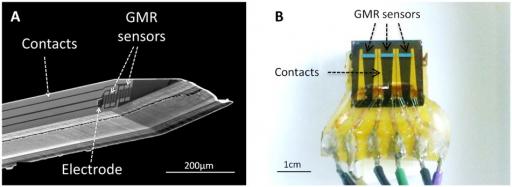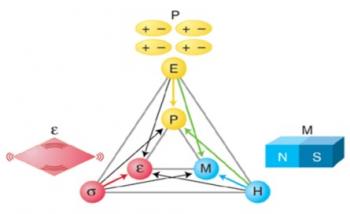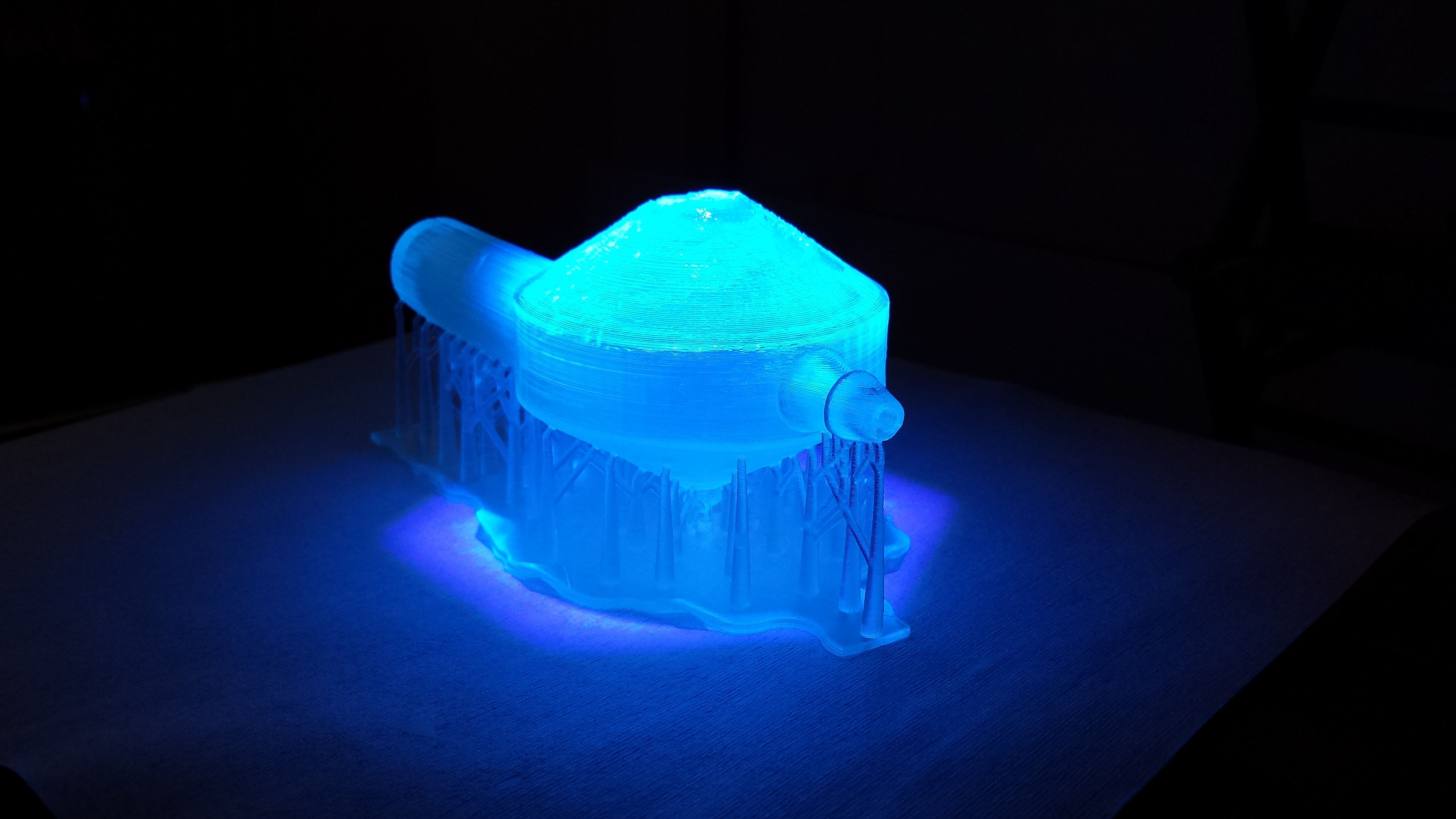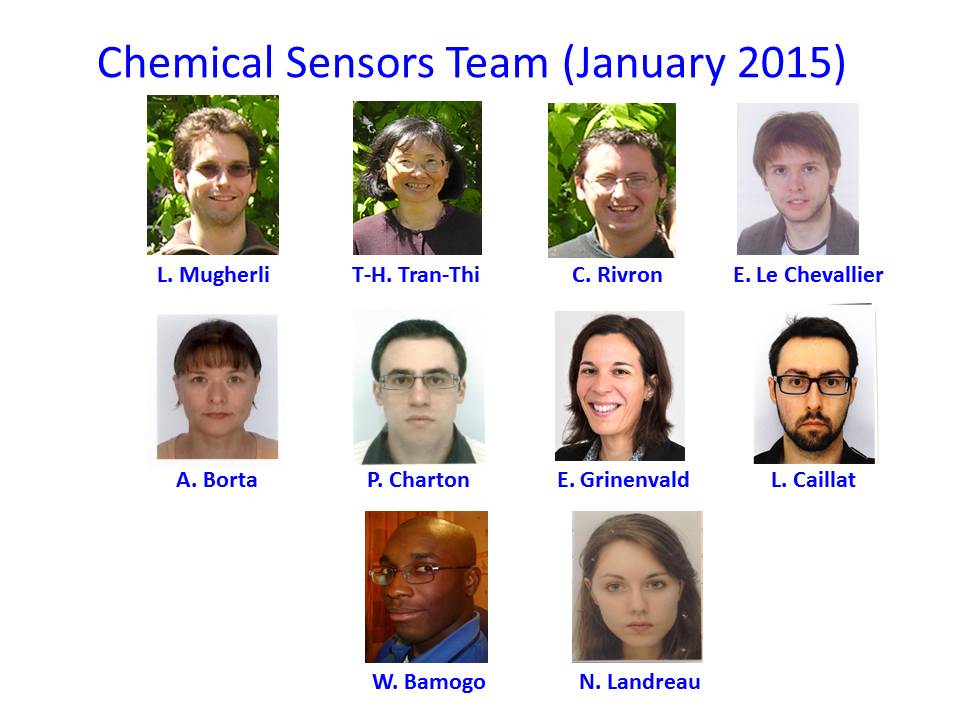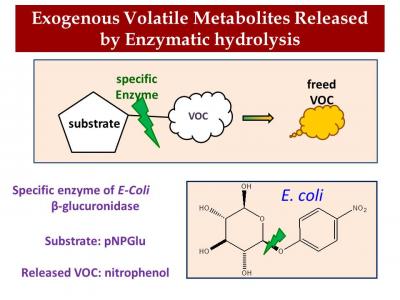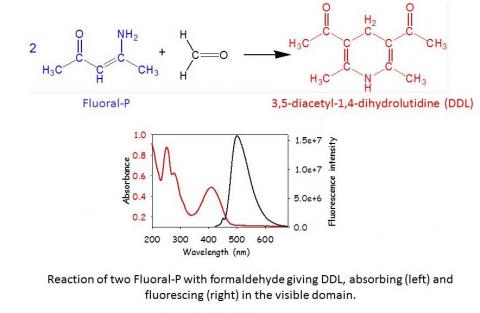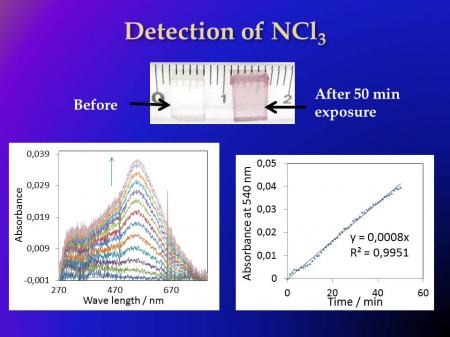Pages scientifiques 2015
Magnetophysiology is the study of the magnetic fields generated by living organisms. In the case of ionic currents flowing into neurons or muscles, the generated magnetic signal is in the picotesla (10-12T) to nanotesla (10-9T) range, i.e. thousands to millions times smaller than the Earth field. SQUIDS are commonly used to sense these very weak magnetic fields [1], [2]; however, as they have to be kept at liquid helium temperature, they use at cellular level measurements can be complicated and impossible for microscale in vivo applications.
In this project, the probes developed are called “Magnetrodes” as a magnetic equivalent of electrodes. They are based on spin electronics which offer the possibility to be miniaturized and sensitive enough (at room temperature) to detect the very weak magnetic signature of neural activity at cellular level .
At CEA-Saclay, we develop two kinds of probes to record the magnetic signature at mesoscale and microscale for in vitro and in vivo experimentations.
At microscale, sharp probes have been designed in a needle shape comparable to electrode design used for electrophysiology. These probes are used as deep sensors to perform localized magnetic recordings of the local neuronal activity. Sharps probes contain one or two GMR elements close to the tip of the probe, enabling gradiometric measurements. An electrode can be located next to the GMR sensors to have a local reference of the LFPs. They are fabricated on very thin Silicon substrate (from 100 to 200 µm) in order to be as less invasive as possible.
At mesoscale, planar probes are used to measure the magnetic field created at the surface of the muscular fibers or at the surface of the cerebral cortex. Planar probes contain a rather large GMR element deposited on a conventional 700µm-thick silicon substrate.
Our measurements are based on three different setups:
- Experimentations in vitro with the muscle fibers of the mouse soleus, where the goal is to test the magnetrode technology with a relatively simple model of muscular action potential propagation.
- Experimentations in vitro with slices of brain hippocampus, where the neurons are parallel arranged and all the somata are lying on a same layer providing a summation of the magnetic field.
- Experimentation in vivo on the visual cortex, where evoked neuronal responses are induced by direct visual stimulus.
The development of highly controllable oxide thin films growth and lithography techniques makes it possible to realize genuine materials stacking and nanostructures dedicated to spintronics applications like magnetic tunnel junctions, spin filters and more recently multiferroics. A renewed interest on ferroelectric materials has emerged for the development of nonvolatile random access memories and multiferroic materials. In multiferroics several ferroic orders can coexist and be eventually coupled, as for example ferroelectric, ferroelastic and/or ferro- (or antiferro-) magnetic long-range orders. The multiferroics class of materials has commonly been extended to anti-ferroics which show antiferromagnetic and antiferroelectric behaviors. Unfortunately, single phase multiferroics with ordering temperatures above 300 K are very seldom and artificial multiferroics are actively sought after. Defining and tailoring new operational multiferroic materials has, in recent years, emerged as an important topic in modern spintronics driven by numerous potential applications and fundamental physics issues such as the coupling between ferroelectric and magnetic orders and domain structures. This opens exciting new perspectives like the control of the magnetic state of an individual device by an electric field (and/or the control of the ferroelectric state by a magnetic field).
Artificial multiferroics can be realized following several routes: (i) doping a ferroelectric material with ferromagnetic ions, (ii) co-deposition and thermal treatments taking advantage of phase separation thermodynamics, (iii) the combination of ferroelectric and ferromagnetic materials in multilayered or nanostructured systems. The coupling between ferroelectricity and magnetism through interface bonding has been predicted theoretically for ferromagnetic/ferroelectric interfaces and was indeed observed in some systems. Additional magnetic exchange coupling using antiferromagnetic layer and strain coupling can be exploited as well.
The functioning principle of multiferroics dedicated to spintronics relies on a subtle interplay between structural strain, magnetization and electric polarization (figure 1). A fundamental understanding of multiferroic materials necessarily needs to address all these properties at the same time which requires the elaboration of single crystalline multiferroic model samples and experimental techniques or tools able to address each every aspect.
The laboratory has acquired expertise in growing epitaxial oxide thin films by atomic oxygen plasma assisted molecular beam epitaxy (AO-MBE). In particular of the ferroelectric perovskite barium titanate (BaTiO3) and ferrimagnetic spinel ferrites (ex. CoFe2O4) thin films, the former is an excellent and well-known ferroelectric material that displays remnant electric polarization higher than bulk crystals and the later class of materials presents a wide range of magnetic properties at room temperature.
In addition to classical laboratory characterizations, the model multiferroics materials are studied within a wide range of pertinent additional synchrotron radiation techniques allowing to access the structure (X-ray diffraction and absorption), the element specific or average magnetic properties (magnetic dichroism, spectromicroscopy) and electrical and magnetic domain structure (spectromicroscopy) that allows determining the electronic and crystalline structures as well as the ferroic orders.
Additive manufacturing (AM) or 3D-printing is an increasingly widespread technique which is often described in a too limited manner as a source for rapid prototyping whereas it is a manufacturing process in itself. It is a new tool for instrumental research laboratories which can now easily manufacture by themselves a large variety of devices with optimized designs. We describes its application to a theme that has seen little developments in recent years that is ICP introduction system spray chambers. We undertake to print and study cyclone spray chambers by combining and comparing for the first time 3 different AM processes, 5 materials and 8 designs. The analytical performances of these spray chambers are compared with commercial glass and PFA chambers in terms of signal intensity, stability, oxide ratio, LOD and wash-out time. It shows that 3D-printed chambers manufactured produced by professional or low-cost printers for less than 1€ of material, provide better results in terms of sensitivity and LOD than costly commercial PFA ones. The limiting factor to achieve the performances in terms of sensitivity is the polymer wettability. LOD measured with polymer printed chambers are in the range or even outperform those measured with the glass chamber. This study also illustrates side arm nebulizer inner shape influence in the aerosol distribution and confirms the importance a free aerosol recirculation current around the nebulizer tip. Transfer tube efficiency is also questioned, it is found to be weakly detrimental to light elements sensitivity but shows no influence on heavy ones as well as nor on the stability or oxide ratio, whatever the element.
The concept exploited by the laboratory is the ability of specific enzymes from the pathogenic bateria to cut an exogenous volatile compound out of an introduced designed substrate. In the case of E-Coli bacteria for example, the beta-D-glucuronidase enzyme in the bacteria culture can release nitrophenol from the 4-nitrophenyl-beta-D-glucuronide substrate.
The released gaseous nitrophenol is then trapped in a nanoporous matrix, which acts as a sponge and concentrates this analyte, which is then detected via its absorbance at 400 nm. The detection time can be reduced to 24 hours with a bacteria culture inoculated with 100 cfu (colony-forming units).
The carcinogenic formaldehyde is a ubiquitous indoor pollutant because of its numerous emission sources (cigarette smoke, plywood, isolation foam, adhesive resins, cosmetic, detergents, etc.); its concentrations in homes can vary from a few ppb to more than 100 ppb. Most humans spend 80 to 85 % of their time indoors; accordingly, the Agency for Toxic Substance and Disease Registry (ATSDR) recommends, for a “chronic” exposure, i.e. during an entire lifetime, a formaldehyde concentration as low as 10 μg/m3 or 8 ppb.
A particular challenge in formaldehyde detection is to detect it selectively among other aldehydes also present in the atmosphere. To this end, Fluoral-P was chosen as probe molecule; it and formaldehyde, which both absorb in the UV, react together in solution to produce the cyclic 3,5-diacetyl-1,4-dihydrolutidine (DDL) compound. The selectivity for formaldehyde arises from the fact that only this aldehyde can produce a cyclic compound which absorbs in the visible; a further attractive feature is that the cyclic DDL fluoresces, which greatly assists the detection at sub-ppb levels of formaldehyde when it is required.
In swimming pools, chlorine (Cl2) is used as a disinfectant to minimize the risk to users from microbial contaminants. But Cl2 is transformed in water into hypochlorous acid (HClO), which reacts with nitrogen compounds generated by human activity like saliva, sweat, urine and skin. This leads to the formation of several chloramines, such as monochloramine, dichloramine and the toxic nitrogen trichloride (NCl3). Because of its low solubility in water, NCl3 is mainly found in the air, and it provokes significant eye and respiratory irritations in swimmers and pool-attendants. Further, epidemiologic studies have recently shown that it can induce asthma, especially in children. The NCl3 content can vary within 10 min depending on the number of swimmers and the churning of water. In order to rapidly renew the pool atmosphere when needed, it is therefore important to be able to follow NCl3’s concentration. Up to now, the only method used to measure gaseous NCl3 is rather slow, since it is based on sampling with a cartridge of the atmosphere during 2 hours, followed by analysis in laboratory.
For the colorimetric NCl3 sensor, the laboratory has employed a strategy similar to that for formaldehyde detection. The well-known reaction of NCl3 with iodide ions in solution leads to the formation of the triiodide ion, I3-, which absorbs at 270 nm. In solution, this latter species can form with amylose the I3-/Amylose complex, which absorbs strongly in the visible at 540 nm. The key innovative idea was to transpose these reactions to nanopores doped with iodide and amylose. The developed sensor can detect NCl3 down to 5-200 ppb within 20 minutes in humid atmospheres (from 50% to 75% relative humidity) at ambient pool temperatures. The sensor is a transparent monolithic matrix of dimension 8X5X2 mm doped with sodium iodide and amylose. When it is exposed to NCl3, a color develops due to formation of the complex I3-/amylose; the color varies from light pink to dark violet depending on the NCl3 concentration.
A plasma mirror is a dense plasma created at the surface of an initially solid target when this target is irradiated by an intense femtosecond laser pulse. Due to its high density (≈10 23 electrons/cm3), it efficiently reflects the incident laser field. In addition, given the brevity of the laser pulse, its interface remains optically-flat during the interaction: plasma mirrors thus specularly reflect the incident laser beam, and can be viewed as high-quality mirrors suitable for UHI beams [Kap91Dou04,Tha07] (Fig.1), with many potential applications (Applications of plasma mirrors). They are also ideal systems to investigate the fundamental physics of UHI interactions (Fundamental interest of plasma mirrors). The Physics at High Intensity group has made major contributions to the investigation of plasma mirrors in the last decade (Results of the PHI on this topic).

Fig. 1: Physics of plasma mirrors. When exposed to UHI laser fields, plasma mirrors specularly reflect the laser with a reflectivity higher than 70% (bottom left image). Their highly-nonlinear coupling with the field (upper left image, from PIC simulations) also leads to the emission of beams of high-order harmonics and relativistic electrons. Typical spatial patterns of these beams are shown in the central images, and their typical energy spectra in the rightmost images (from experiments with the UHI100 laser at I=3.1019 W/cm2).
[Dou04] Doumy et al, Phys. Rev. E 69, 026402 (2004)
[Kap91] Kapteyn et al, Opt. Lett. 16, 490 (1991)
[Tha07] Thaury et al, Nature Physics 3, 424 - 429 (2007)
12-18 months Postdoctoral Position in CEA-Saclay (France). Starting Falls 2015
Contact: sebastien.aumaitre@cea.fr
 |
 |
Energy storage optimization in power grid with intermittent renewable power sources











